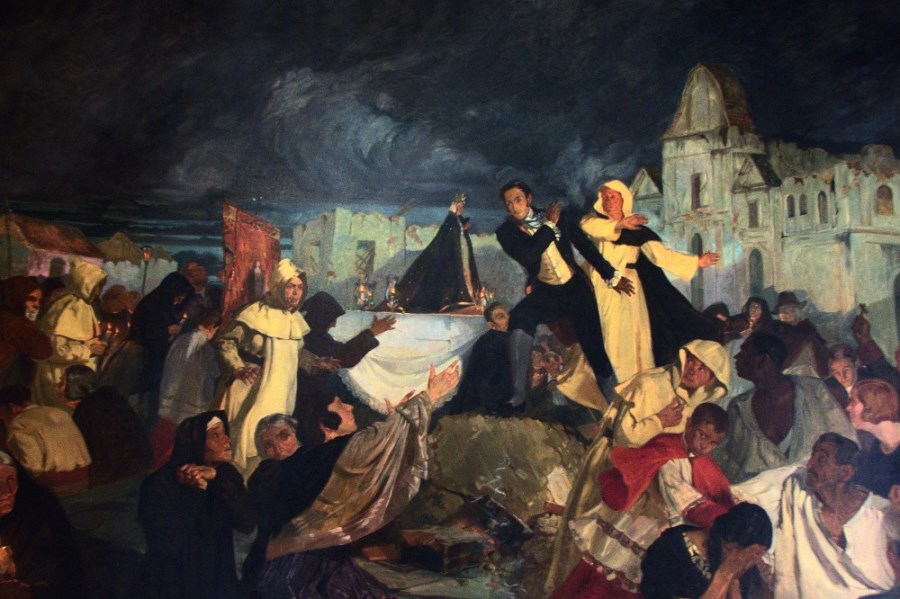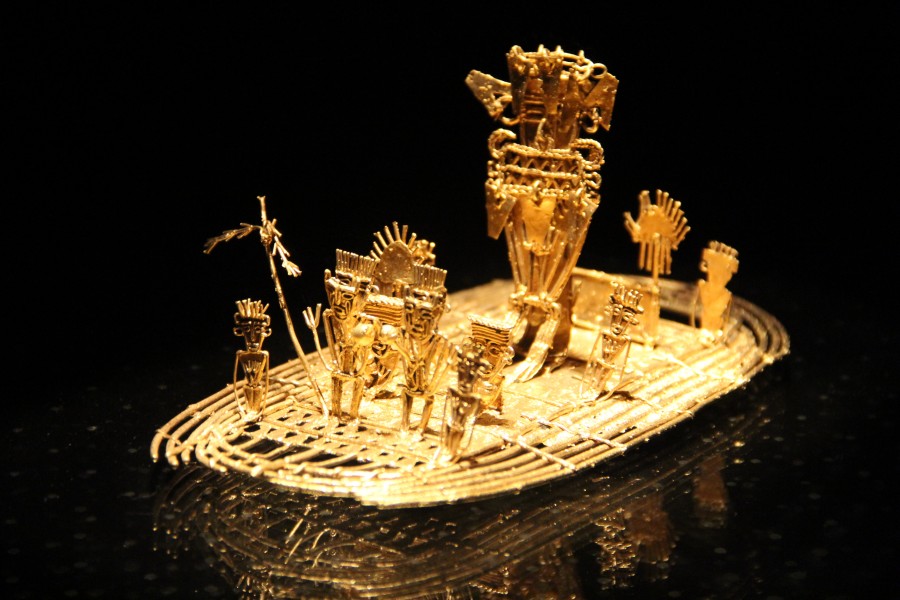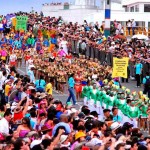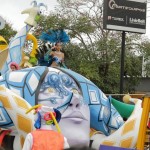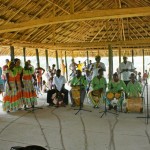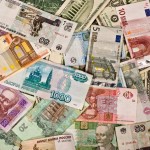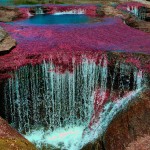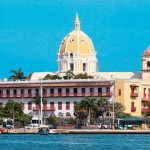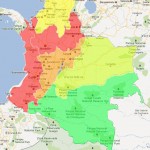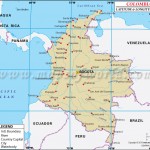The history of Colombia includes the settlements and societies originally inhabited by indigenous peoples, most notably, the Muisca Confederation, Quimbaya Civilization, and Tairona Chiefdoms
Its natural diversity is complemented by a heterogeneous, diverse and unified multicultural nation.
The contributions of different cultures are evident throughout the country’s, history which dates back 12,000(+/- years, with traces of human settlements with approximately 5,000 years of existence, Thanks to its locatíon it was a crossroads between the different territories that make up the Americas, offering its first settlers extraordinary biodiversity.
In the process of adaptation to these ecosystems varíous indigenous cultures emerged, some more developed than others, among these the most important were:
MUISCA
The Muisca inhabited the eastern Andean cordillera and were noted for their skills as metal-workers, making figures and body accessories includíng bracelets, earrings and pectorals, Among the most important works is the Balsa Muisca (Muisca Raft), a piece of gold art which shows the ceremony that was celebrated in the laguna de Guatavita (Lake Guatavita) that gave rise to the legend of El Dorado, The Spanish conquistadors were obsessed with finding this legendary place of immense wealth where treasures were supposedly hidden.
TAYR0NA
The Tayrona populated the north-west area of the Sierra Nevada in Santa Marta, buildíng cities on stone foundations connected by roadways among which the iconic Teyuna, also known as the ‘Ciudad Perdida'{Lost City) stands out. Today it is an Archaeological Park.
QUIMBAYA
This civilization populated the Middle Cauca region, They were skilled metal workers and created the ceremonial Quimbaya Poporos lime receptors using the lost-wax technique which they used to mix with dry coca leaf
TUMACO
They inhabited the Pacific Coast and made gold and silver body ornaments and complex ceramic anthropomorphic representations.
SAN AGUSTÍN
The San Agustín civilization settled in the mountainous regions near the source of the no Magdalena (Magdalena River), They built funerary monuments with carved stone statues, which can be seen in the Parque Arqueológico de San Agust/n (San Augustine Archaeological Park).
TIERRADENTRO
The Tierradentro inhabited the mountains in the northeast of the Cauca Department. They built underground burial chambers or hypogea that make up the Parque Arqueológico de Tierradentro (Tierradentro Archaeological Park).
CAUCA
They lived in the Upper Cauca and manufactured gold body ornaments, especially pectoral pieces with representations of bird-men.
ZENU
The Zenu were an Amerindian tribe that populated the plains of the Caribbean where they built a flood control system. They were famed goldsmiths producing outstanding pieces using the semi-filigree technique.
NARIÑO
They lived in the highlands and valleys of the department of Narino and in the north of present day Ecuador. They were potters and excellent goldsmiths skilled in hammering and casting techniques.
CALIMA
This culture settled on the banks of the Calima and Cauca rivers, These potters and skilled goldsmiths were experts in producing pectorals and diadems.
TOLIMA
Populated northern Huila and Tolima. Experienced goldsmiths who made complex representations of animals, used to adorn their burial sites.
Although the Spanish conquest was devastating, wiping out many of the indigenous peoples, it also resulted in a new hybrid of mestiza cultures and the incorporation of various ethnic groups of African origin that contributed to the demographic diversity of the country.
At least 87 indigenous groups can hr lound in present day Colombia who Inherited the ancient visions of the cosmos from their ancestors. They have their own belief systems, languages, customs and different ways of adapting to the territories and ecosystems that form a living history worthy of admiration and respect. These indigenous communities are scattered throughout the country, and II Is possible to identify different regions where at least 50% of the population are lliillgonous, mainly in the departments ill Ain,i/onir„ Cauca, Guainía, La Guajira, Nariño, Vaupés and Vichada.
After the Spanish conquest the first major colonies were established starting In the coastal region of the Caribbean. Santa Marta, founded in 1525 by Rodrigo de Bastidas, Is the oldest city in Colombia, followed by Cartagena, founded by Pedro de Heredia In 1533, and Santiago de Cali which was founded by Sebastian de Belalcazar, In 1536, who also founded many other places.
After the Spanish conquest the first major colonies were established starting In the coastal region of the Caribbean. Santa Marta, founded in 1525 by Rodrigo de Bastidas, Is the oldest city in Colombia, followed by Cartagena, founded by Pedro de Heredia In 1533, and Santiago de Cali which was founded by Sebastian de Belalcazar, In 1536, who also founded many other places.
in July 20, 1810 the struggle for independence began with a protest known . As the “Grito de Independencia”(Cry of Independence). It was followed by a long period of armed resistance culminating in the decisive batalla del puente de Boyacá (Battle of Boyacá Bridge), on August 7, 1819. Simon Bolivar was one of the main heroes of the Independence movement and the initiator of a republican period that propelled Colombia into the fellowship of free, sovereign and democratic nations of the modern world.
Today the country is established as a Constitutional State, organized as a unitary, decentralized republic with autonomous territorial entities as defined in the Constitution of 1991. Its fundamental principles are those of human dignity, work, solidarity and the prevalence of general interest, It has public authorities that comprise the legislative, judicial and executive branches, the latter exercised by the President, who is elected for a period of four years, and can only be reelected once for the same time period. He or she is responsible for addressing State Policy. The nation’s capital is the Bogotá Distrito Capital (Bogotá Capital District).
Tours & Tickets in Colombia
| COLOMBIA TRAVEL GUIDE |
| Related Articles |
If you’re travelling to Colombia, we help you:

![]() General Information About Colombia: National symbols of Colombia – Colombia: living history – Geography of Colombia – Economy of Colombia – Languages of Colombia
General Information About Colombia: National symbols of Colombia – Colombia: living history – Geography of Colombia – Economy of Colombia – Languages of Colombia
![]() Practical information about Colombia: Climate – How to get to Colombia – Visa, Customs, Documentation and Taxes – Embassies and consulates in Colombia – Health and vaccination – Emergency numbers – Culture of Colombia – Measures and Electricity – Currency of Colombia
Practical information about Colombia: Climate – How to get to Colombia – Visa, Customs, Documentation and Taxes – Embassies and consulates in Colombia – Health and vaccination – Emergency numbers – Culture of Colombia – Measures and Electricity – Currency of Colombia
![]() Tourist Information about Colombia: General Information – Practical information about Colombia – Adventure Colombia – Hotels and accommodations in Colombia – How to Get to Colombia – Gastronomy in Colombia – Colombia’s Best Festivals and Carnivals – Tourist Attractions in Colombia – Foreign Embassies and Consulates in Colombia – Tips and advice for travel in Colombia – Top 10 Colombian Travel Destinations – Natural regions of Colombia – Cultural Tourism in Colombia – UNESCO Intangible Cultural Heritage Lists – UNESCO Heritage Sites in Colombia – Top 10 amazing places to visit in Colombia – Colombian Cuisine – Tourism of Nature
Tourist Information about Colombia: General Information – Practical information about Colombia – Adventure Colombia – Hotels and accommodations in Colombia – How to Get to Colombia – Gastronomy in Colombia – Colombia’s Best Festivals and Carnivals – Tourist Attractions in Colombia – Foreign Embassies and Consulates in Colombia – Tips and advice for travel in Colombia – Top 10 Colombian Travel Destinations – Natural regions of Colombia – Cultural Tourism in Colombia – UNESCO Intangible Cultural Heritage Lists – UNESCO Heritage Sites in Colombia – Top 10 amazing places to visit in Colombia – Colombian Cuisine – Tourism of Nature
![]() Travel Guide of Colombia: Colombia Travel Guide – Amazonas – Antioquia – Arauca – Atlántico – Bolivar – Boyacá – Caldas – Caquetá – Casanare – Cauca – Cesar – Chocó – Córdoba – Cundinamarca – Guanía – Guaviare – Huila – La Guajira – Magdalena – Meta – Nariño – Norte de Santander – Putumayo – Quindio – Risaralda – San Andrés y Providencia – Santander – Sucre – Tolima – Valle del Cauca – Vaupés – Vichada
Travel Guide of Colombia: Colombia Travel Guide – Amazonas – Antioquia – Arauca – Atlántico – Bolivar – Boyacá – Caldas – Caquetá – Casanare – Cauca – Cesar – Chocó – Córdoba – Cundinamarca – Guanía – Guaviare – Huila – La Guajira – Magdalena – Meta – Nariño – Norte de Santander – Putumayo – Quindio – Risaralda – San Andrés y Providencia – Santander – Sucre – Tolima – Valle del Cauca – Vaupés – Vichada
Flights, Cheap Airfare Deals & Plane Tickets |

